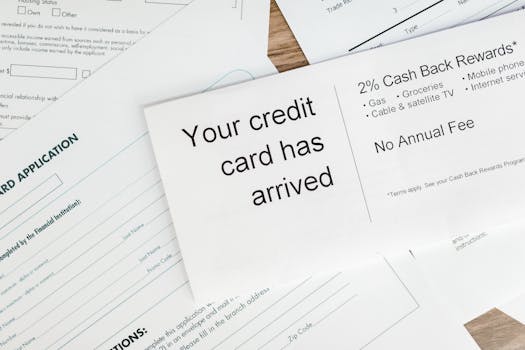Have you ever glanced at your bank statement and wondered if you actually understood all the numbers and codes? You’re not alone. Bank statements can feel overwhelming at first glance and are often full of unfamiliar terms.
Bank statements are essential for tracking your money, recognizing potential fraud, and keeping your finances organized. Knowing how to read them properly could mean the difference between catching problems early and missing out on important details.
In this guide, you’ll discover clear steps, practical examples, and even a few analogies that demystify your bank statement. By the end, you’ll feel confident interpreting every line and column!
Defining the Structure of Your Bank Statement
A bank statement is more than just a list of transactions—it’s like a financial journal you can reference any time you want. Every section of your statement serves a purpose for your records.
Think of your bank statement like the blueprint of a house. Each room—or section—has its unique designation and determines how you navigate the entire space.
- Account Summary: Provides a snapshot of balances and activity during the statement cycle.
- Transaction List: Chronicles deposits, withdrawals, and checks, offering details for every entry.
- Statement Dates: Shows the timeframe (usually monthly) covered by this record.
- Account Information: Displays your name, account number, and maybe the branch location.
- Bank Contact Information: Provides phone numbers and addresses in case you need support.
- Interest and Fees: Built-in summary of any charges, earned interest, or other important notes.
Learning to recognize these parts makes it easier to navigate the rest of your statement and spot unusual activities or errors before they escalate.
Translating Lines and Codes: Examples in Context
Some bank statements feel like reading a foreign language until you break down their abbreviations and codes. Take, for example, the entry ‘ACH DEP 03/15’—this signals an electronic deposit posted on March 15th, commonly from direct payroll.
Another case: Imagine seeing ‘ATM WDR 12345 03/12.’ That means an ATM withdrawal occurred on March 12th at a specific terminal or branch. Recognizing such patterns turns confusion into understanding.
Suppose you find a code like ‘CHK 1042.’ That commonly refers to check number 1042 processed during the cycle. It’s a prompt to match your issued checks with statement records for accuracy.
Even if all you see are numbers and dates, building context around abbreviations helps take the mystery out of bank statements, making them actionable financial documents rather than just paperwork.
Essential Steps for Decoding Errors and Unexpected Charges
Facing a jumble of transactions can seem daunting, but following a systematic approach can make auditing your bank statement much less stressful and more effective.
- Review the Statement Period: Confirm the dates match your expectations for the covered period. Mistakes here could mean missing transactions or unnoticed fraud. Compare this step to checking the expiration on dairy—if it’s off, check more closely!
- Examine Account Details: Verify the account number and name. Imagine using someone else’s mail by mistake—oversight here can cause confusion or privacy issues.
- Reconcile Transaction List: Cross-check your records or receipt stack with the list of entries. Spotting an entry you don’t recall is like finding an unknown item in your grocery bag—look for the reason!
- Investigate Fees and Charges: Query the source of every charge. If a monthly service fee appears unexpectedly, compare with previous statements or bank policies. Unfamiliar amounts deserve investigation.
- Calculate Balances: Ensure the opening and closing balances add up based on your recorded activity. Discrepancies are signals to dig into specific entries or calculations.
- Monitor for Duplicates: Look for repeated transactions, which could indicate errors or even potential scams. Double-charges require immediate attention.
- Save for Future Reference: Download and store your statements. You’ll have a paper trail if you spot a mistake later, much like saving warranty papers for a new gadget.
By following these steps, you can catch most ordinary errors or questionable activity, reducing surprises and building financial confidence over time.
Spotting Patterns and Contrast Scenarios for Smart Money Management
Comparing several months’ worth of statements can be much like putting pieces together to reveal a trend. Consistent expenses help budget planning, while sudden spikes could signal lifestyle shifts or errors.
Imagine two scenarios: In one, your recurring subscriptions align neatly between statements. In another, you find new charges or timing changes, affecting your available balance. These contrasts reveal valuable budgeting clues and help avoid overdrafts.
| Category | Consistent Spend | Unexpected Fluctuations |
|---|---|---|
| Groceries | $300 each month | $300$400—sudden jump signals more eating out |
| Utilities | $100 steady | $100$150 after seasonal spike or leak |
| Entertainment | $50 each cycle | $50$120 during holiday months |
Studying these scenarios with your own statement makes it easy to recognize trends, adjust habits, or spot hidden issues before they affect your finances more seriously.
Everyday Analogies: Bank Statements as Financial Diaries
Think of your bank statement as a diary for your wallet. Each entry tells a story of where your money goes, why you spent it, and how you make choices.
Just as keeping a food diary helps make healthier eating decisions, reviewing your bank statement can identify unnecessary snacks—a triple espresso here, a forgotten subscription there—that drain your account over time.
Comparing statements is like looking back through last year’s calendar. Noticing patterns lets you anticipate busy months, adjust savings, or plan for holidays without worry.
Using your statement as a financial diary also means you’re less likely to miss major life events—both planned or unexpected—that impact your account, such as a large purchase or a rare fee.
Important Features to Watch for in Digital and Paper Formats
- PDF Download Option: Lets you save and print copies for recordkeeping or sharing with advisors.
- Secure Access Controls: Ensures only you see your sensitive financial information, especially in online banking apps.
- Customizable Alerts: Many banks let you set up notifications for certain transactions or balance thresholds.
- Detailed Descriptions: Some banks now include merchant names, times, and even transaction locations online.
- Search and Filter Tools: Helps you quickly find transactions from specific dates, vendors, or categories.
- Statement Consolidation: All savings, checking, or credit card accounts might be listed together for a complete overview.
Paying attention to these features not only saves time but also improves accuracy in budgeting. Enhancements in digital banking mean you get more information at your fingertips—just tap, scroll, or click for details.
With these tools available, tracking your finances becomes far less daunting and more interactive. You can behave like your own personal bookkeeper without needing an accounting degree!
Reading Between the Lines: Gaining New Perspectives
When comparing two people—one who reviews bank statements monthly and one who ignores them—we often see big differences in money management. The attentive reader catches errors quickly, avoids surprise fees, and gradually develops stronger financial habits.
Imagine if someone stopped reading their bank statement entirely. Small charges—like recurring, unused subscriptions—could go undetected, adding up over months. Eventually, these hidden leaks might erode savings or force a scramble to cover an unexpected bill.
What if a parent and teen review statements together? The parent can explain ATM fees or budgeting, while the teen practices financial responsibility early. These scenarios underline the long-term benefits of making this habit stick.
Building Confidence: Putting Your New Skills Into Practice
Now that you know what each section means, how to spot oddities, and why reviewing statements matters, let’s recap the essentials. Interpreting your bank statement is like reading the roadmap to your financial health—and it’s a living guide updated every month.
Reading statements empowers you to recognize spending patterns, respond quickly to inconsistencies, and communicate efficiently with your bank when questions arise. It also lays the foundation for financial goals—from smarter daily decisions to planning for significant milestones.
By building these habits, you reduce anxiety about money and take control of what sometimes feels out of reach. Over time, interpreting statements becomes part of your regular financial routine, offering reassurance and insight.
Next time your bank statement arrives—whether by mail or app notification—pause and read carefully. Each line is a clue leading to smarter choices, stronger security, and a clearer overall picture of your financial life.

